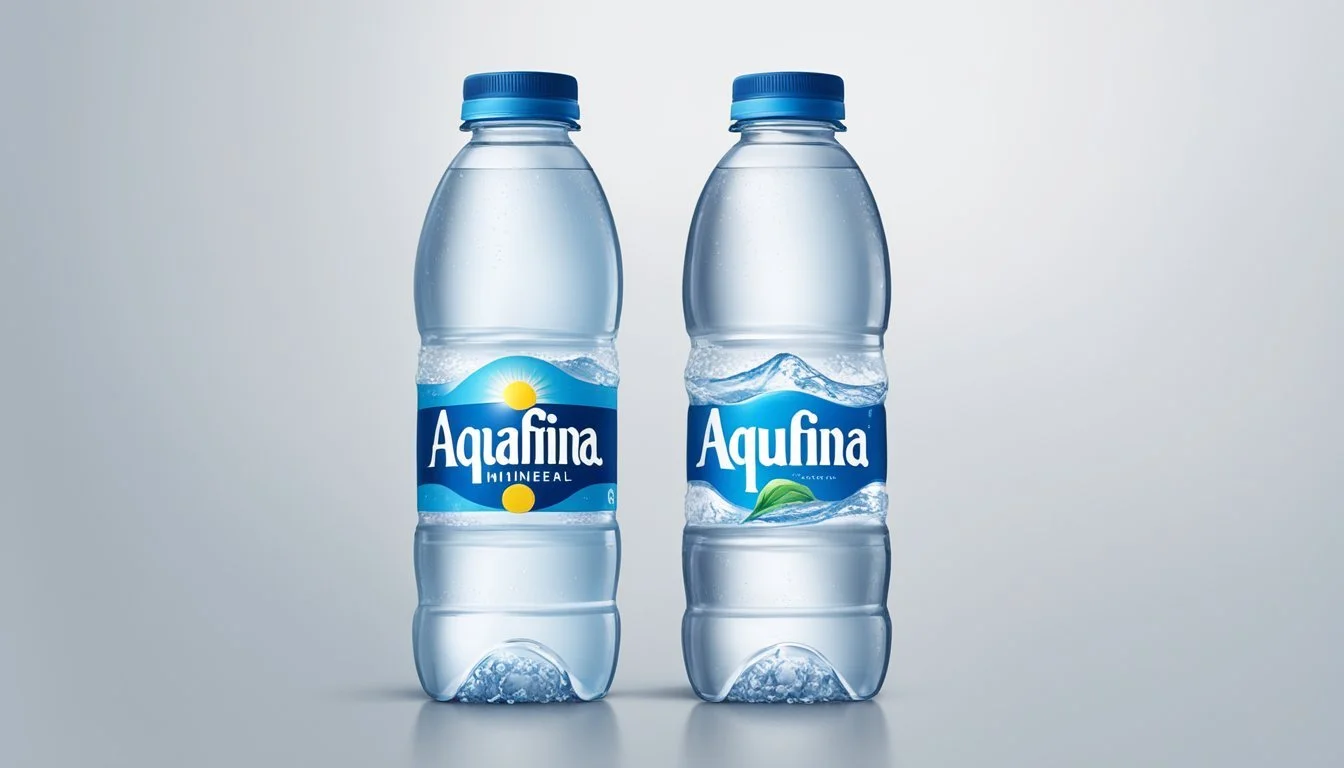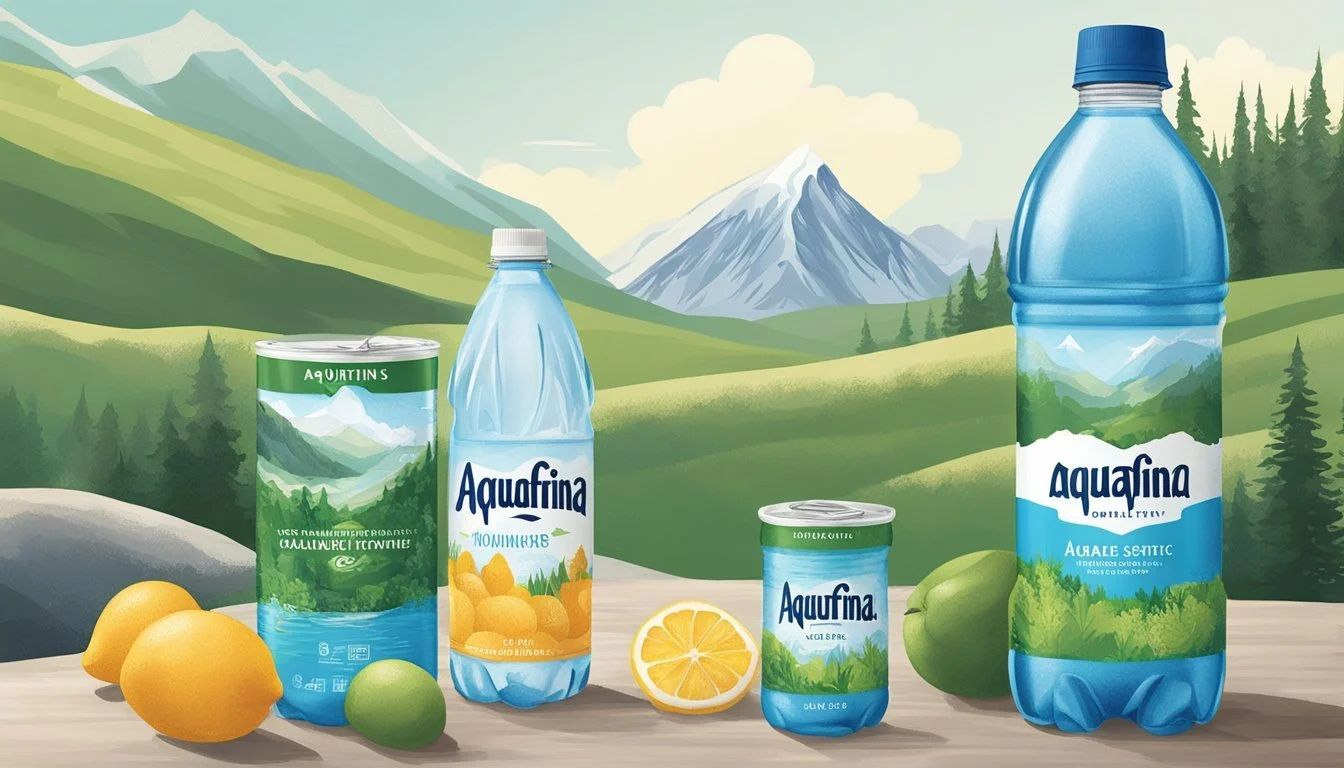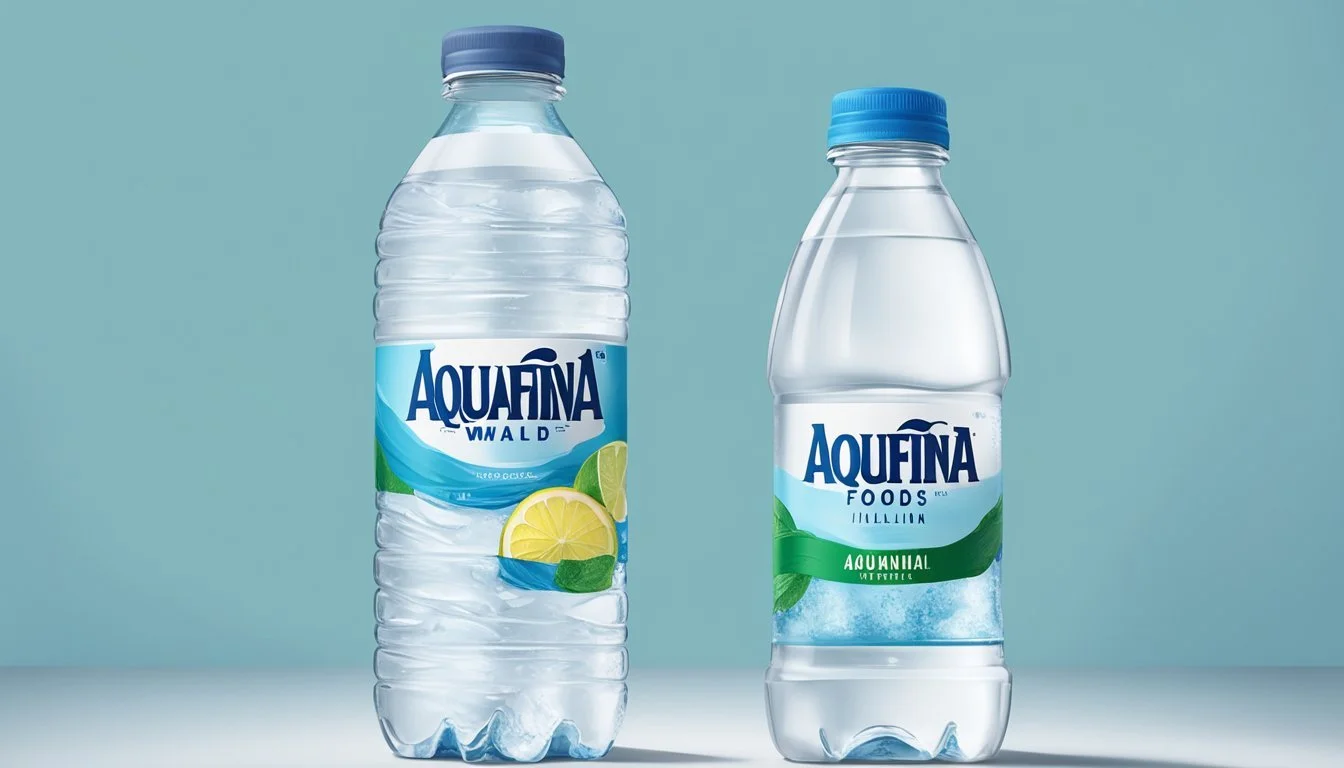Aquafina vs. Whole Foods Italian Still Mineral Water
Which Bottled Water is Better?
When it comes to choosing between Aquafina and Whole Foods Italian Still Mineral Water, consumers often weigh factors such as taste, purity, and sourcing. Aquafina, produced by PepsiCo, is a ubiquitous brand that uses a rigorous purification process to ensure the water meets high-quality standards. Whole Foods Italian Still Mineral Water, sourced from natural springs in Italy, offers a distinct mineral profile valued by aficionados.
For those prioritizing purity and a clean, neutral taste, Aquafina often emerges as the preferred choice. Its comprehensive filtration process removes most minerals and impurities, leading to a crisp and refreshing result. On the other hand, Whole Foods Italian Still Mineral Water is appreciated for its natural mineral content, which can impart a subtle yet pleasant taste that some find more satisfying than more neutral options.
Choosing the best bottled water between Aquafina and Whole Foods Italian Still Mineral Water ultimately depends on individual preferences. Whether you gravitate towards the pristine simplicity of Aquafina or the mineral-rich character of the Italian option, both choices offer unique benefits that cater to different tastes and needs.
Comparative Overview of Bottled Water Brands
Bottled water comes in a variety of brands, each with its unique qualities. Aquafina, produced by PepsiCo, is known for its purification process, including reverse osmosis, which provides a clean, crisp taste. Whole Foods Italian Still Mineral Water, on the other hand, offers a distinctive mineral content derived from natural springs in Italy.
Dasani, a Coca-Cola brand, also utilizes a purification process involving reverse osmosis and the addition of minerals for taste. Fiji and Evian are celebrated for their natural sources, providing water with distinct mineral profiles. Fiji's waters come from an artesian aquifer in the Fiji Islands, whereas Evian's source is the French Alps.
Poland Spring and Arrowhead offer spring water sourced from multiple locations. These brands are appreciated for maintaining the natural taste of spring water.
List of some popular water brands:
Aquafina
Dasani
Evian
Fiji
Smartwater, also a Coca-Cola product, is purified by vapor distillation and includes added electrolytes. Icelandic Glacial offers naturally alkaline water from Iceland.
For sparkling options, Perrier and San Pellegrino are well-regarded for their effervescence and mineral content. Voss is known for its sleek packaging and artesian water from Norway.
Crystal Geyser and Nestlé Pure Life provide more affordable options, often sourced from multiple springs and subjected to purification processes.
When comparing these brands, consumers often consider factors like source, taste, and mineral content. Each brand has its audience, depending on individual preferences for taste and purity.
Health Considerations in Bottled Water
When comparing bottled waters like Aquafina and Whole Foods Italian Still Mineral Water3, it's essential to consider the health impacts, water quality, and potential contaminants. Additionally, the benefits provided by minerals in the water play a crucial role in determining which option may be healthier.
Understanding the Impacts of Hydration
Staying hydrated is vital for overall health, affecting everything from cognition to physical performance. Bottled water can be a convenient source of hydration. Aquafina, a purified water, often appeals to those who prefer a clean, neutral taste. Whole Foods Italian Still Mineral Water3, rich in natural minerals, provides an additional benefit by replenishing electrolytes lost through sweat.
Both options ensure adequate hydration, but the choice may depend on whether one values the pure simplicity of Aquafina or the added minerals in Whole Foods' offering.
Evaluating Water Quality and Safety Standards
The quality and safety of bottled water are regulated by both the Food and Drug Administration (FDA) and the Environmental Protection Agency (EPA). Aquafina undergoes a thorough purification process that removes impurities, ensuring compliance with stringent quality standards. Whole Foods Italian Still Mineral Water3, sourced from natural springs, also meets these regulations while maintaining its mineral content.
Water Quality Standards:
FDA and EPA regulations
Purification Process (Aquafina)
Natural Spring Sourcing (Whole Foods)
Ensuring both waters meet these standards provides confidence in their safety for consumption.
Contaminants of Concern in Bottled Water
Contaminants like PFAS chemicals, arsenic, lead, and cadmium can pose serious health risks. Consumer Reports has highlighted the presence of toxic PFAS in some bottled waters. Aquafina and Whole Foods Italian Still Mineral Water3 must be monitored to ensure that total PFAS levels stay within safe limits advised by the EPA, which recommends limits of 70 parts per trillion (ppt) for certain PFAS.
Common Contaminants:
PFAS Chemicals
Arsenic
Lead
Cadmium
Evaluating bottles for these contaminants is crucial to maintaining water safety.
Benefits of Minerals in Mineral Water
Mineral water, such as Whole Foods Italian Still Mineral Water3, contains naturally occurring minerals like calcium, magnesium, and sodium. These minerals can support various bodily functions, including bone health, muscle function, and hydration balance. Aquafina, while pure, lacks these additional minerals unless fortified post-purification.
Key Minerals in Mineral Water:
Calcium: Supports bone health
Magnesium: Aids muscle function
Sodium: Maintains hydration balance
These benefits can make mineral water an attractive option for those seeking nutritional advantages along with hydration.
Environmental and Ethical Implications
Both Aquafina and Whole Foods Italian Still Mineral Water present notable differences in their environmental impact and ethical considerations, largely driven by their sourcing, production processes, and corporate commitments to sustainability.
Bottled Water and Environmental Impact
The environmental footprint of bottled water is significant. This includes energy consumption, emissions, and plastic waste. Aquafina, owned by PepsiCo, relies on purified municipal water sources, while Whole Foods uses naturally sourced mineral water from Italy.
Key differences:
Plastic Waste: Bottling both Aquafina and Whole Foods Italian Still Mineral Water contributes to plastic pollution. PepsiCo's large-scale manufacturing may produce more packaging waste.
Water Sourcing: Whole Foods' practice of sourcing water internationally involves carbon emissions due to transportation compared to Aquafina, which sources water locally.
Regulations: Both brands are subject to FDA regulations and must adhere to guidelines set by the Environmental Protection Agency.
Ethical Considerations and Corporate Responsibility
Corporate responsibility and ethical sourcing practices are crucial. Transparency, sustainability, and adherence to regulations highlight the ethical frameworks of these companies.
Key aspects:
PepsiCo and Corporate Practices: PepsiCo has faced scrutiny for its environmental policies and contribution to plastic pollution. Efforts towards sustainability are ongoing but have been criticized as insufficient at times.
Whole Foods' Approach: Whole Foods emphasizes sustainability and ethical sourcing, yet international transport of their Italian water may offset some ethical gains.
Federal Oversight: Both companies must comply with federal regulations ensuring water safety and quality. The Environmental Protection Agency and FDA set limits for contaminants, such as PFAS, which have been found in some bottled waters.
Corporate malfeasance and lapses in ethical practices can lead to significant environmental degradation and regulatory issues, affecting consumer trust and corporate reputation.
Sourcing of Bottled Waters
Understanding the origin of bottled water can greatly influence the choice between brands based on their sources. Aquafina and Whole Foods Italian Still Mineral Water differ notably in their sourcing methods, which affects their composition and taste.
Natural Spring Water Sources
Whole Foods Italian Still Mineral Water is sourced from natural springs. These sources are often located in protected, remote areas to ensure purity. Natural spring water undergoes minimal processing, preserving its mineral content.
The water is collected directly from underground formations and is typically rich in minerals such as calcium, magnesium, and potassium. This type of water is often favored for its refreshing taste and perceived health benefits.
Purified and Tap Water Sources
Aquafina, on the other hand, primarily uses purified tap water. This water, sourced from municipal supplies, undergoes an extensive purification process. The process includes reverse osmosis and other filtration methods.
Reverse osmosis removes impurities and minerals, resulting in purified water that is often preferred for its neutral taste. Such water may lack the mineral content found in natural spring sources but ensures consistency and safety.
International Water Source Varieties
Aquafina and Whole Foods represent different approaches to international bottled water sourcing. While Aquafina sources water locally and applies global purification standards, Whole Foods Italian Still Mineral Water focuses on specific regional sources known for their natural spring water.
The International Bottled Water Association sets standards that many brands follow. Bottled waters from various origins, such as Italian mineral waters, often emphasize their unique geological origins and the distinct mineral compositions that result from these environments.
Both approaches have their merits, appealing to different consumer preferences and needs.
Labeling and Transparency in Bottled Water Industry
Labeling and transparency in the bottled water industry involve understanding what the labels reveal, the regulatory frameworks governing label accuracy, and the importance of contact information for consumer communication.
Interpreting the Label: What Does It Tell Us?
Bottled water labels provide critical information about the product. Key details include the water's source, its processing methods, and any added minerals. For example, mineral content may be highlighted in premium brands.
Consumers often look for terms like "spring water," "artesian water," or "filtered water" which indicate different sources and treatments. Understanding these labels helps assess water quality and suitability for personal preferences.
Regulations and Standards for Label Accuracy
The Food and Drug Administration (FDA) regulates bottled water labels to ensure accuracy and prevent misleading claims. Regulations stipulate that labels must indicate the water source and any treatment processes.
Much of this regulation is guided by FDA standards and voluntary guidance which aim to maintain purity and safety. Legal limits on contaminants are enforced, and any non-compliance may result in action against the manufacturer.
Contact Information and Consumer Communication
Labels must also provide contact information, such as a phone number or address, to facilitate consumer inquiries. This aspect is crucial for obtaining detailed water quality reports and handling any concerns or questions.
Companies often adopt a combination approach, offering some quality information on the label and more detailed information upon request. This transparency builds trust and enables consumers to make informed decisions about the water they consume.
Including contact details complies with both regulatory requirements and good consumer practice, thus supporting informed purchasing choices.
Types of Bottled Water and Consumer Choices
Consumers have a wide array of bottled water options nowadays. Key factors influencing these choices include preferences for still or sparkling water, the popularity of enhanced and flavored waters, and the appeal of luxury brands endorsed by water sommeliers.
Still versus Sparkling: Personal Preferences
Still water is non-carbonated and is often chosen for its clean, neutral taste. Examples include Aquafina and LIFEWTR. Sparkling water, on the other hand, contains dissolved carbon dioxide, giving it a fizzy characteristic. Leading names like LaCroix, Bubly, and Topo Chico offer various flavors in this category.
The choice between still and sparkling often comes down to personal taste preferences. While some enjoy the effervescence of sparkling water, others prefer the simplicity of still. Additionally, the type of meal or activity may influence this choice.
The Rise of Enhanced and Flavored Waters
In response to growing demand for health and wellness products, companies have introduced enhanced and flavored waters. Brands like Core Hydration and LIFEWTR add minerals or vitamins to their waters, aiming to appeal to health-conscious consumers.
Flavored waters, such as Canada Dry's offerings or Bubly's fruity varieties, cater to those seeking a refreshing twist without the calories and sugar of traditional sodas.
These options have gained traction for their additional health benefits and variety in flavor, driving more consumers to opt for these over plain water.
Luxury Brands and Water Sommeliers
Luxury bottled water brands such as S.Pellegrino and VOSS are marketed as premium products. They are often associated with upscale dining experiences or gourmet meals. Water sommeliers, experts in discerning the taste profiles of water, often endorse these luxury waters, highlighting their unique mineral compositions.
Consumers seeking the finest water experience may turn to these brands for their reputed purity and taste. Despite their higher price tags, the perceived value and quality of these luxury waters justify the cost for many enthusiasts.
Consumer Tips and Buying Guide
Choosing the right bottled water can ensure safe drinking water and provide the best value for consumers. It is essential to consider factors such as ingredients, price, and brand reputation.
How to Choose the Right Bottled Water
When selecting bottled water, look at the source and purification process. Aquafina is purified through a rigorous filtration system, while Whole Foods Italian Still Mineral Water comes from natural springs in Italy.
Check for contaminants and additives. Aquafina is known for its purified water free from contaminants. Whole Foods Italian Still Mineral Water, sourced from mineral-rich springs, often retains natural minerals beneficial for health.
Pay attention to packaging. Most bottled waters come in plastic, which may contain microplastics. If this concerns you, opt for brands that use eco-friendly packaging.
Understanding Pricing and Value
Pricing varies based on the brand, source, and packaging. Aquafina, a mass-market brand, typically offers lower prices, making it an economical choice. Whole Foods Italian Still Mineral Water, being imported, is often pricier.
Compare quantities and costs. Larger packages or bulk purchases often reduce the price per unit. Look for deals or discounts at local stores or online retailers.
Consider perceived value. While Aquafina offers purified, safe drinking water, Whole Foods Italian Still Mineral Water provides unique mineral content. Choose based on what aspects (e.g., purity, mineral content) are more valuable to you.
Using these tips can help consumers make informed decisions and find the best bottled water that meets their needs and preferences.
Final Evaluation: Aquafina versus Whole Foods Italian Still Mineral Water
Aquafina, produced by PepsiCo, is a popular choice for purified water. It undergoes a rigorous purification process including reverse osmosis and microfiltration. This results in a clean, refreshing taste.
Whole Foods Italian Still Mineral Water is sourced from natural springs in Italy. It boasts a natural mineral content, offering a distinct taste profile with a touch of minerals.
Feature Aquafina Whole Foods Italian Still Mineral Water Source Municipal Natural springs, Italy Purification Reverse osmosis, microfiltration Natural filtration through geological layers Mineral Content Very low Moderate pH Level Neutral (around 7) Slightly acidic (around 5) Taste Clean, neutral Mineral-rich, distinct
Aquafina is often chosen for its consistency and availability. It's an ideal option for those who prefer water without any significant mineral taste.
Whole Foods Italian Still Mineral Water provides a more unique drinking experience due to its natural mineral content. It appeals to those who appreciate the subtle flavors imparted by its mineral content.
Each water type has its strengths, catering to different preferences for taste and source purity.




